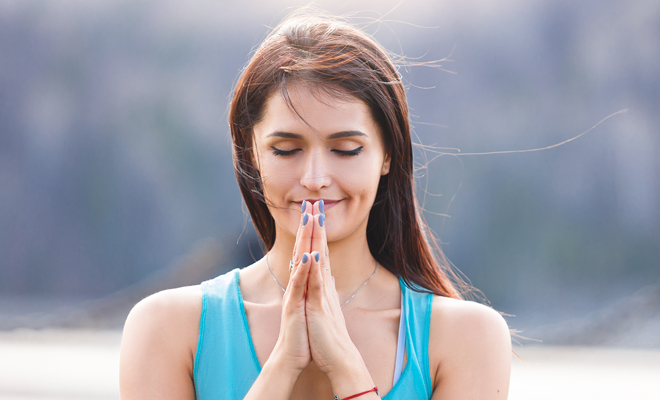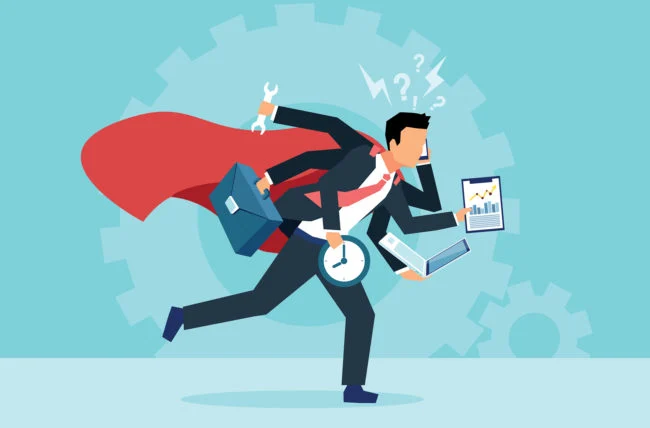If when you go out into the street you find a lion walking on the sidewalk in front of you, your body would activate the mechanisms that keep you alert to face danger. Your physiological state would be activated so that your heart would begin to beat faster and your lungs would increase their work rate, achieving better oxygenation, while the muscles would tense in case a quick response was necessary.

Faced with this threat, your body would sweat and paralyze for an instant, while your endocrine system and immune defenses would work at a faster pace and your cerebral cortex would plan the best strategy for the situation. Faced with a lion, some people would retreat and others would advance to a safe place, but all would feel fear. In this case, the state of ‘physiological anxiety’ plays a protective role.
Anxiety, as a body surveillance mechanism, it is a physical and mental response to situations that pose a threat to the integrity of the person. It is a positive emotion common to all human beings, which awakens the senses and acts as an alarm. But this reaction, necessary in the face of real danger, can turn against the person if it is taken to certain limits or if it is maintained.
How to control pathological anxiety?
When these surveillance mechanisms appear before insignificant stimuli, last over time or are of an exaggerated intensity, pathological anxiety appears, which can be chronic. In some people, anxiety is not caused by specific threats, but by irrational fears that are present in their lives. In addition to discomfort, they often experience a sick paralysis in their projects, tasks, and relationships. Existential vertigo, anxiety, helplessness, fear of something indefinite, is some of the signs of the anxious state. In this immobile, disciplined posture, in silence and looking ahead, the person remains attentive to his breathing-to the entry, permanence and exit of the air from his lungs-and to everything that happens, surrounds him and reaches his perception, observing his thoughts, noticing when your mind loses the present and goes elsewhere, prey to any rambling or anxiety.
According to transpersonal therapist and Zen instructor, one of the simplest and most effective tools to control moments of anxiety are “conscious breathing” techniques. “These are techniques that can be applied at any time and help to avoid worries and fears in the face of supposed future or imminent threats, because they direct attention to one’s own body, which always lives in the here and now.”
– Zap-Zen or sitting meditation: This practice consists of sitting with your eyes half-open, concentrating your gaze on a fixed point located a meter or a meter and a half in front of your sight. The person remains with their legs crossed one on top of the other, in the oriental style, upright and with their head pointing to the ceiling and their spine forming a vertical line between the lower and upper parts of the body.
“Janzen helps to verify that, as with ideas, emotions and feelings, which fluctuate throughout a day, discomforts come, pass and disappear, which helps to know oneself and also demonstrate that the only permanent thing is change”, explains Gruella.
Self-massage :Tense and release the body. With a slow and deep breath, you have to go through the muscles one by one, tensing and relaxing them. After two inhalations, you have to relax the tense muscles, and move on to the next ones. To exit the exercise, take a deep breath and stretch your entire body.
– Breathing calmly: There are two types of extremely, and indicated to face moments of anxiety, according to Mercedes Gruella. One of the methods consists of counting forty complete breaths through the nose, each understood as the entire cycle that includes inhalation and exhalation.
To count them, each one is numbered while the air is released: unoooooo…, doooossssss…., tresses…., emptying completely.
The other technique is called ‘square breathing’ and consists of inhaling the air, holding it in the lungs, exhaling it, and holding the lungs empty, counting the same amount of time in each stage, each of the same duration: three, four or five seconds.
In both cases, the important thing is to maintain the breathing rhythm with attention. And awareness of the exercise, avoiding being scattered or confused, and trying to stop the mind from jumping from one thought to another.






